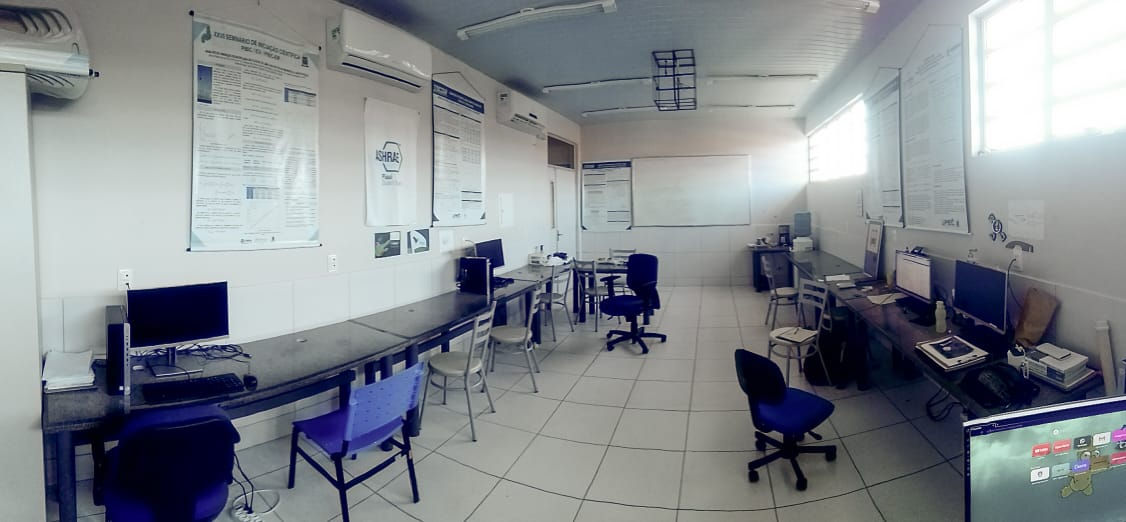
KNOWLEDGE BUILDING
LAMEC is dedicated to the construction and dissemination of knowledge through applied research. The laboratory promotes an environment of continuous learning, encouraging the exchange of ideas between students and researchers, participation in scientific conferences and the publication of scientifc articles. In addition, LAMEC values interdisciplinary collaboration, connecting computational modeling to various areas of engineering and applied sciences. The development of academic and industrial projects reinforces the laboratory's commitment to innovation and technological advancement, preparing members for complex challenges in research and the job market.
At LAMEC, knowledge development follows a structured process that prepares students for advanced research and professional growth. Our training consists of three key stages:
-
Fundamental Cycle – Students begin by studying strength of materials, basic numerical methods, and LaTeX, building a solid foundation in engineering mechanics and computational modeling.
-
Specialization Phase – At this stage, students choose a specific research area, focusing on an advanced numerical method and the fundamental theories of that field (elasticity, beam theory, fluid mechanics, or soil mechanics). Research becomes more targeted, preparing them for high-level academic or industry applications.
-
External Collaboration & Networking – To ensure long-term career development, students are encouraged to connect with external professors from partner laboratories, building professional relationships that can lead to opportunities in top research groups and companies.
This structured approach ensures that our members gain both technical expertise and the necessary connections to excel in academia and industry.
RESEARCH TOPICS
LAMEC develops advanced research in computational modeling applied to mechanics, exploring numerical methods that are at the forefront of scientific and technological knowledge. The laboratory investigates complex structures, soil-structure interaction, fluid-structure interaction and innovative materials, using computational approaches to predict and optimize the behavior of mechanical systems. Our studies combine analytical and numerical formulations, allowing detailed analysis of different physical phenomena and validation of new theoretical models. To this end, we use advanced computational tools, such as MATLAB and COMSOL Multiphysics, which enable high-precision multiphysics simulations.
Our research is organized into two major areas:
1. Advanced Numerical Analysis
Finite Element Method (FEM) – Applied to structural analysis, solid dynamics and multiphysics problems.
Boundary Element Method (BEM) – Focused on the efficient resolution of boundary problems, especially in solid mechanics.
2. Applications
Beam modeling and analysis – Development and validation of computational models for advanced structural analysis.
Metamaterials – Investigation of materials with customizable mechanical and wave propagation properties for structural and functional applications.
Multiphysics modelling– Analysis involving fluid and structural behavior simultaneously.
Computational optimization – Development of algorithms to optimize material geometries and properties.
LAMEC stands out for its use of cutting-edge computational methods to solve challenging engineering problems, contributing to the advancement of knowledge and the development of new technologies.
ADMISSION
At LAMEC, we believe that passion and perseverance are the key factors for success in research. Unlike traditional selection processes, we do not consider academic performance indexes (IRA) or grades as admission criteria. Instead, we look for students who are truly motivated, curious, and willing to dedicate themselves to the challenges of computational modeling.
We value individuals who are eager to learn, experiment, and push the boundaries of knowledge. Research requires resilience, critical thinking, and the ability to persist through complex problems. If you are driven by the desire to explore new ideas, solve intricate numerical challenges, and contribute to cutting-edge engineering advancements, LAMEC is the right place for you.
COLLABORATION
LAMEC maintains a network of strategic collaborations with leading researchers and laboratories, strengthening its presence in the academic and industrial scenarios. The laboratory has partnerships with professors and research leaders from USP, UNICAMP, UnB, and UFSM, among others, who frequently accept (or event ask for) LAMEC students to continue their academic careers. In addition, LAMEC cultivates friendly relations with professors from several universities, expanding opportunities for scientific exchange. Former students of the laboratory currently hold positions in foreign universities and large companies, facilitating cooperation in research and innovation projects and contributing to the expansion of LAMEC's impact in science.
LAMEC is open to collaborations with professors, researchers, companies, and sponsors interested in advancing computational modeling in engineering. We believe that strong partnerships drive innovation, and we welcome opportunities for joint research projects, knowledge exchange, and industry applications. Companies looking for cutting-edge numerical simulations, optimization strategies, or custom computational solutions will find in LAMEC a dedicated and skilled team ready to tackle complex engineering challenges. Whether through academic cooperation, technology transfer, or sponsorship of research initiatives and events, we are eager to build meaningful connections that foster scientific and technological progress.
